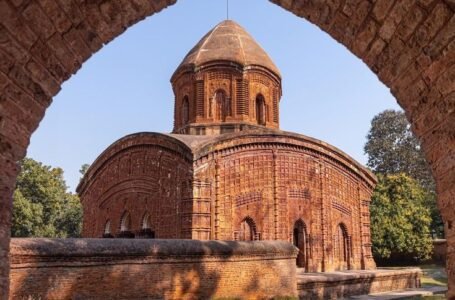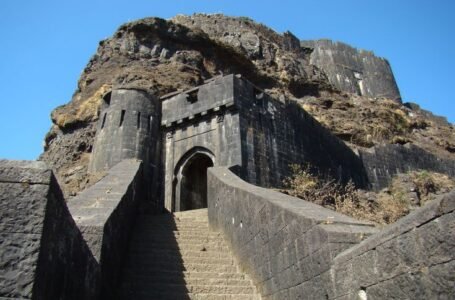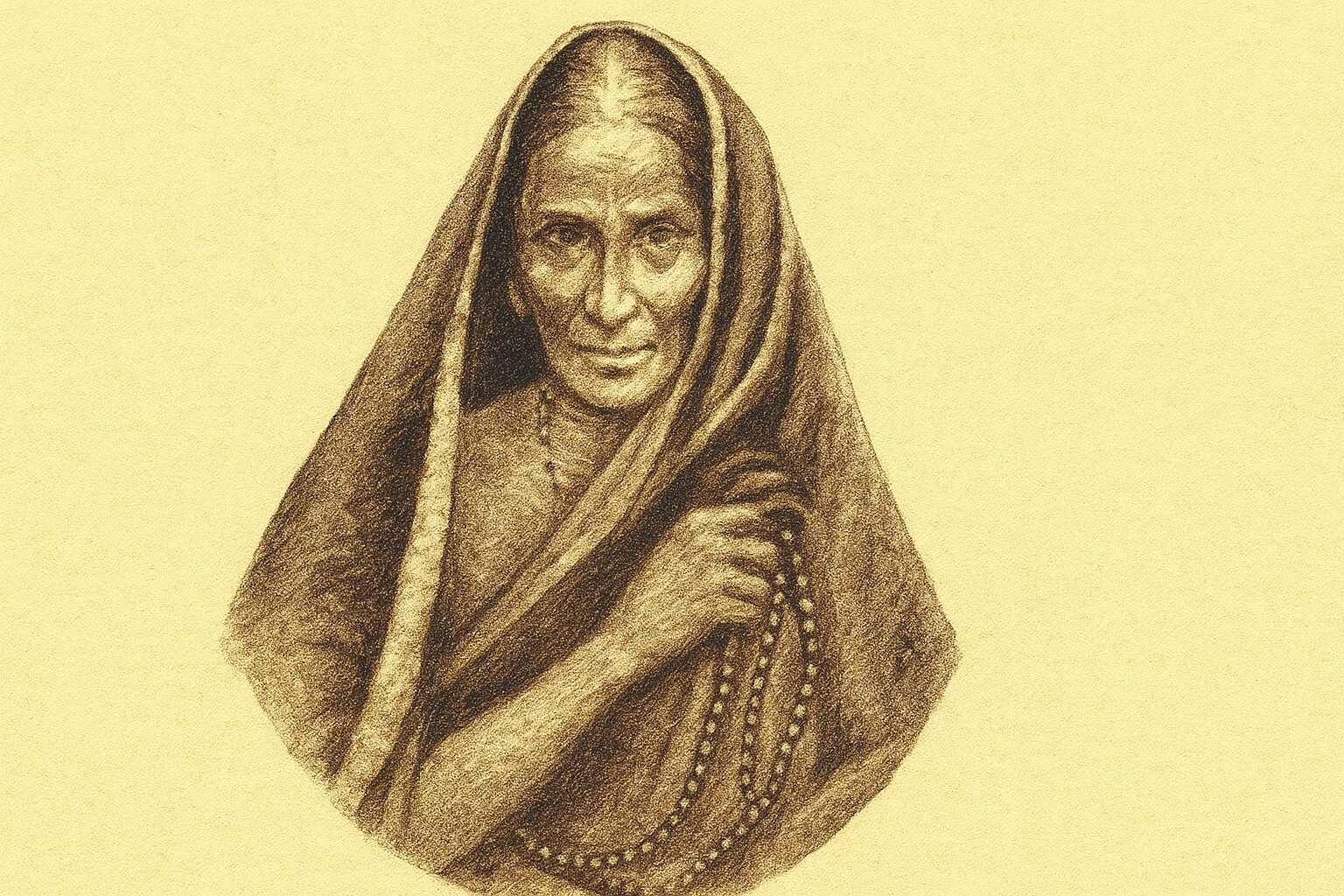Baidyanath Jyotirlinga: Journey Through Time and Devotion
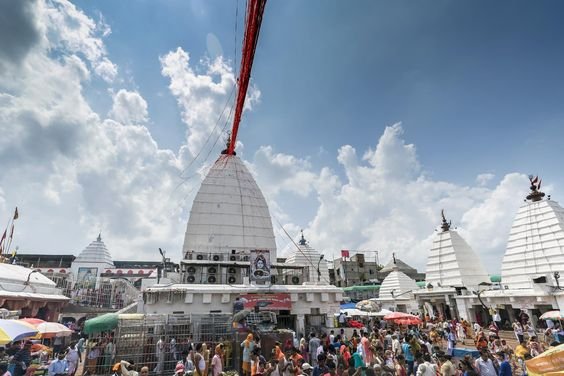
Baidyanath or Baba Baidyanath jyotirlinga is the 9th jyotirlinga in the series of 12 jyotirlingas. Situated in Deoghar, Jharkhand, Baidyanath gets its name due to its unique ability to heal illnesses and grant its followers good health and prosperity. Baidyanath Jyotirlinga in Deogarh is named after Lord Shiva, who is said to have appeared when Ravana offered his ninth head at this place and he healed him of his wounds.
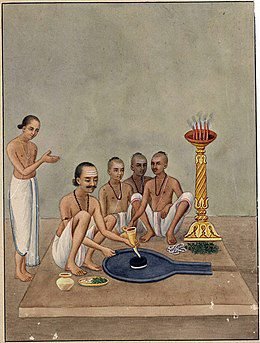
Along with modern history books, Baidyanath is mentioned in numerous Hindu texts, including the Matsyapurana, the Ramayana, and the Shivapurana. The temple is situated in a breathtaking location close to the Mayurkashi River.
Next to to the temple is a stunning Shaktipeeth shrine dedicated to the goddess Parvati. The world is said to have begun with the sacred bond between Shiva and Shakti, which is attested to by Vaidyanath. In the fortunate month of Shravan, millions of pilgrim swarm to Baidyanath in hopes of receiving blessings.
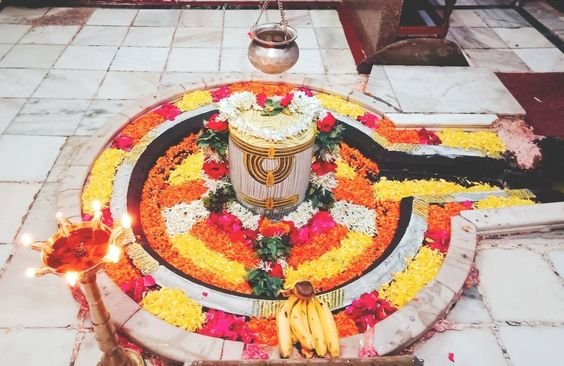
In the town of Deoghar, there are numerous folktales corresponding to the origin of Vaidyanath. The most widely accepted legend holds that during the Treta Yuga, King Ravana of Lanka prayed to Lord Shiva Day in day out. Ravana sought to convince Mahadev to remain in Lanka for the city’s security. Shiva granted him permission to take his “Atmalingam” to Sri Lanka because of his devotion. However, on the journey, the Lord Shiva specified that the lingam could not break or be given to another individual. Because Lord Shiva was protecting him, the Gods feared that Ravana would cause chaos throughout the world. Vishnu, in order to thwart the plan, asked lord Varuna to enter Ravana’s stomach as ‘Achaman’. As the water god Varuna entered Ravana’s stomach, he had a great desire to let go of the water, so he gave the Shiv Linga to Baiju Gadariya, a cow shephard, who was the avatar of Lord Vishnu. Baiju Gadariya got infuriated by the considerable time taken by Ravana and so he placed the Linga there. As the stipulated condition could not be fulfilled, hence the Linga was affixed in Deoghar. This infuriated Ravana, who tried to lift the lingam violently and broke it. He began to offer each of his ten heads to Lord Shiva after experiencing intense guilt. Lord Shiva appeared, pleased with his penance, and healed all of his wounds. A.s a result, he was given the name “Vaidya” (Doctor), and the location became known as Baidyanath.
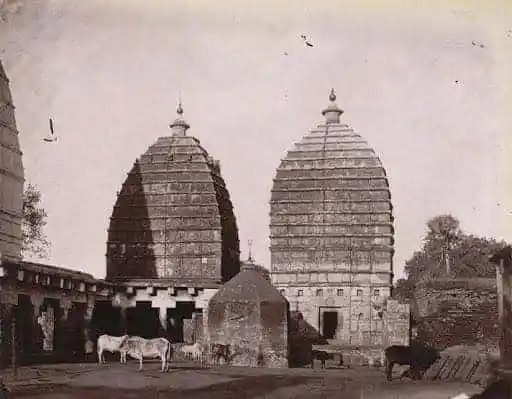
Baidyanath is distinguished by its dual worship as a Jyotirlingam and a Shaktipeetham, which are the shrines dedicated to Goddess Shakti. The place on earth where Sati’s heart fell was Baidyanath Shaktipeeth. The holy temple is very auspicious for Hindu marriages because, as per the Shiva Purana, it represents the divine unity of Shiva and Shakti. A couple’s souls are thought to be eternally bound together when they get married at the temple or come for Darshan. For this reason, Baidyanath is visited by thousands of Hindu couples seeking blessings from all over the world.
Massive white stone walls enclose the expansive courtyard of the stunning Deoghar temple. About 22 additional temples honoring various deities are located within the Baidyanath complex. According to religious belief, this temple was constructed by the god Vishwakarma. The main structure, the central section, and the entrance comprise the three parts of the temple.
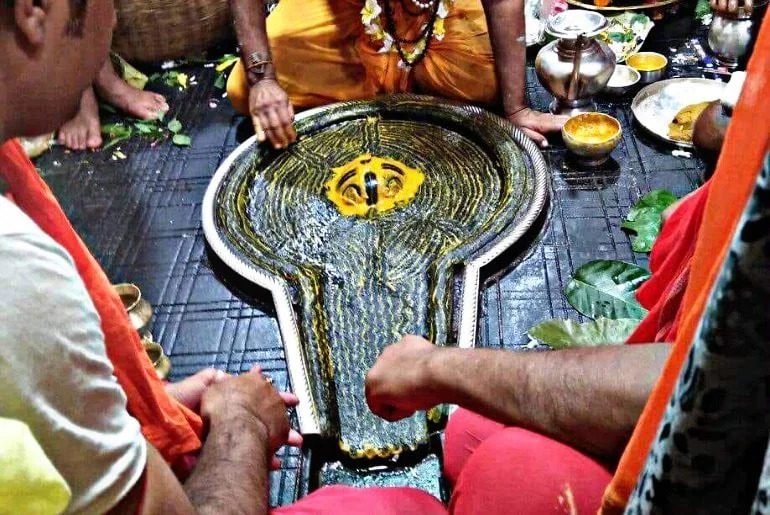
The stunning 72-foot-tall temple shikhara gives it the appearance of a lotus with white petals. Three gold vessels, donated to the temple by Raja Puran Singh, the King of Gidhaur, are arranged in an ascending order on the top. In addition to these vessels, there is Chandrakanta Mani, an eight-petalled lotus jewel.
The holy Jyotirlinga, which has a diameter of approximately 5 inches and is positioned atop a 4-inch stone slab, is housed within the Sanctorum temple. The main Shiva temple and the temple dedicated to Goddess Parvati are next to each other, and their peaks are connected by sacred threads. Volunteers climb the Shikhar of Shiva and Parvati temples as part of a unique ritual at the temple to tie them with holy red threads donated by worshippers. This is an extremely auspicious ceremony that represents the union of Goddess Parvati and Lord Shiva.
The most notable event held in Deoghar is the Shravan Mela (fair), which takes place in the months of July and August. Over 8 million worshippers gather in Baidyanath to offer holy Ganges water that is collected from Sultanganj. To get to Vaidyanath, the devotees walk 108 km and carry “Kanwar” on their shoulders.
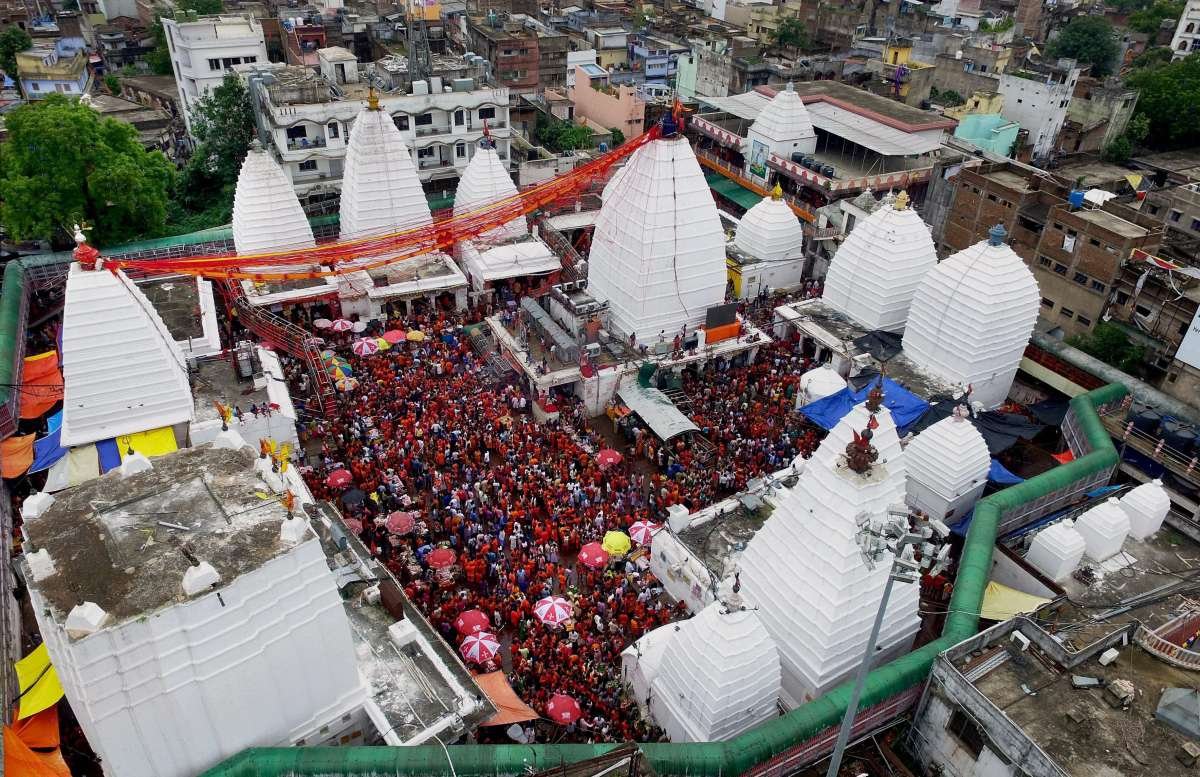
Two of the most notable facts about the temple is that the top of the “Atmalingam” at Baidyanath temple is slightly broken. This sits perfectly with the legend wherein Ravana tried to uproot the lingam from this place in agitation. And there is a “Trishul” (trident) on the Shikhar of all Jyotirlinga temples, but in Baidyanath there is a “Panchshool”. Temple priests believe that this Panchshool is a symbol of destroying five human sins (Lust, Anger, Greed, Fascination, and Jealousy).
The ability for devotees to pursue healing, wellbeing, and spiritual development is what gives the Baba Baidyanath temple its spiritual significance. Devotees gather around the Baidyanath Jyotirlinga, which is linked to health and healing, to pray for relief from both physical and mental illnesses and to ask for divine intervention and blessings. Darshan at this temple is therefore a crucial component of the pilgrimage to the twelve Jyotirlingas.
